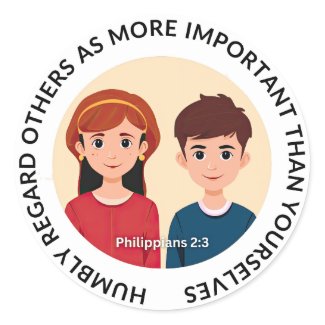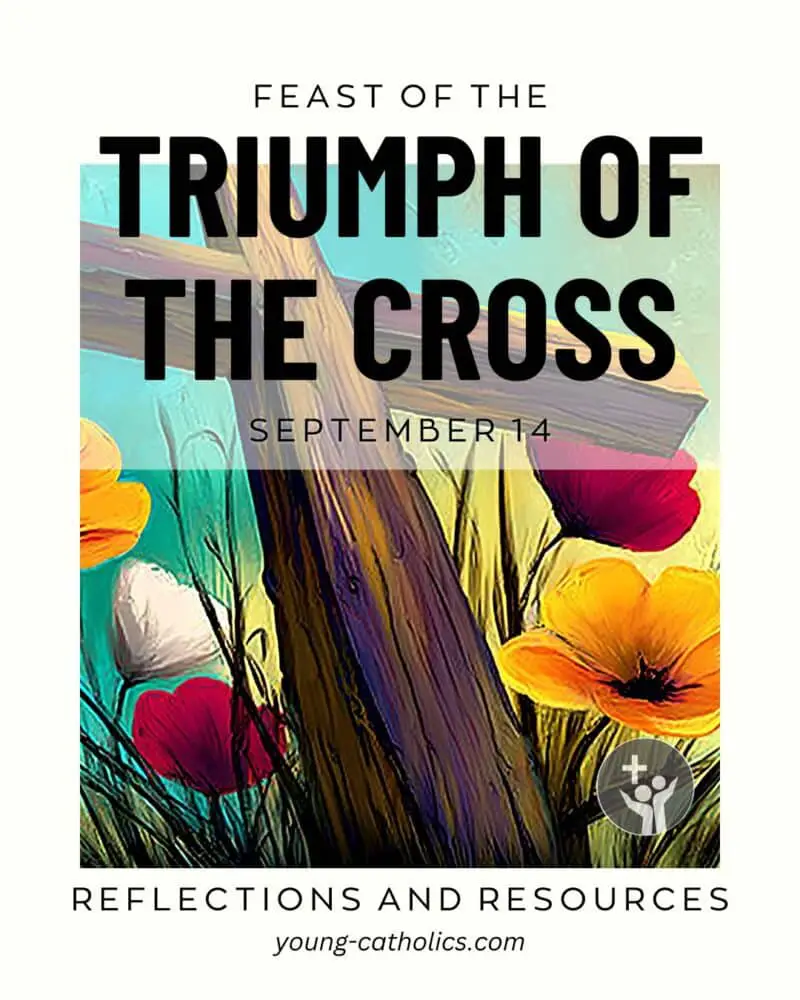The Letter to the Philippians

The Letter to the Philippians is one of the shorter books in the New Testament. It was written by Saint Paul while he was in prison. He sent it to the Christian community in the city of Philippi, which was in Macedonia, a part of modern-day Greece. The letter is personal and full of encouragement.
Paul had a close friendship with the people in Philippi. They helped him when he was in need. He wanted to thank them and help them stay strong in their faith. Even though he was suffering in prison, Paul shared his joy and hope in Christ. He reminded the Philippians to keep trusting Jesus no matter what.
A big theme in the letter is joy. Paul talked about joy even in hard times. He wanted the Philippians to know that real joy comes from knowing Christ. He also told them to be humble and serve one another, just like Jesus did.
This letter is filled with simple advice. Paul said to stay united, avoid arguments, and pray about everything. He told them to think about good things and to trust that God would take care of them. Even though it is short, Philippians gives us strong encouragement to live as faithful followers of Jesus.
A Letter Full of Hope
The Letter to the Philippians was written by Saint Paul. He was a missionary who traveled to many places to spread the message of Jesus. Paul started the church in Philippi during one of his trips. The people there were the first Christians in Europe.
Paul wrote this letter while he was in prison. Most think he was in Rome at the time, but some believe it could have been another city. Even though he was locked up, Paul used his time to write letters to the churches he had helped begin.
The Christians in Philippi had supported Paul during his travels. They sent him gifts and helped care for his needs. Paul wrote this letter to thank them and to help them stay strong in their faith.
The letter shows Paul’s deep care for this community. He did not focus on his pain or fear. Instead, he wrote about joy, peace, and trusting Jesus. His message gave strength to the Philippians, and it still helps Christians today.
A Letter That Feels Like a Friend Talking
Philippians is written like a friendly letter. It is warm and personal. Paul does not sound like he is giving a speech or teaching a class. Instead, it feels like he is talking to people he knows and loves. His words are kind, honest, and full of care.
Paul uses simple language. He repeats key ideas like joy, peace, and unity. He gives advice and shares his own experience. He does not try to impress. He wants to encourage. His tone is gentle but clear.
One special part of the letter is a poem or hymn about Jesus. It talks about how Jesus was humble and obeyed God, even to the point of dying on a cross. Then God raised him up. This poem helps explain how Christians should live.
Even though Philippians is short, the writing is strong and full of feeling. It reads like a message from a good friend who wants you to keep going and never give up.
Living the Faith with Joy and Humility
Philippians shares several themes that connect well with Catholic teaching. Paul writes about how to live as a follower of Jesus. He reminds us to stay faithful, be joyful, and care for others.

- Joy in Christ
Paul talks about joy many times, even though he is suffering. This joy does not come from good times. It comes from knowing Jesus. Catholics are called to live with this kind of joy, even when life is hard. - Unity in the Church
Paul asks the Philippians to avoid arguing. He tells them to be united in love and to work together. This matches the Catholic call to live as one Body of Christ. - Humility and Service
The hymn about Jesus in chapter 2 is important. Jesus humbled himself and served others. Catholics are called to follow his example—putting others first and choosing love over pride. - Living a Life of Prayer
Paul says to pray about everything. He teaches that prayer brings peace. This fits with the Catholic life of daily prayer, trust in God, and asking for help in all things. - Hope in Suffering
Paul is not afraid to suffer for Jesus. He sees it as part of the Christian life. Catholics believe that suffering can have meaning when it is joined with the Cross.
These themes remind us how to follow Jesus in daily life. They point to joy, service, prayer, and hope.
What’s Inside the Letter
Philippians is only four chapters long. But each part has something important to say. Paul writes in a clear way, moving from thankfulness to teaching, and then to encouragement. Here is a simple way to look at the letter:
- Greeting and Thanks (Philippians 1:1–11)
Paul begins with a warm greeting. He thanks God for the Philippians and prays for them. - Paul’s Situation and Encouragement (Philippians 1:12–30)
Paul talks about being in prison. Even so, he shares how the message of Jesus is still spreading. He encourages the people to stay strong. - Living Like Christ (Philippians 2:1–30)
Paul gives advice on being humble and caring for others. He includes a special hymn about Jesus lowering himself and being lifted up by God. - Pressing On in Faith (Philippians 3:1–21)
Paul warns about false teachers. He shares his own story and says to keep moving forward in faith. - Final Advice and Thanks (Philippians 4:1–23)
Paul tells the people to rejoice, not to worry, and to pray. He ends by thanking them for their support and sending greetings.
Each section adds to the message. Paul reminds the Philippians to keep following Jesus with joy, peace, and love.
Why Philippians Still Matters Today
Philippians is still important for us now. Life today can be stressful, noisy, and confusing. This letter helps us focus on what really matters—Jesus.
Paul reminds us to choose joy, even when things go wrong. That can be hard, but it helps us trust God more. We do not need perfect lives to feel peace. We just need to stay close to Jesus.
He also teaches us to treat others with kindness and care. In a world where people argue and fight, Philippians calls us to be gentle and work together. Paul’s words about humility are a good reminder for families, schools, and parishes.
This letter also reminds us to pray and not give in to fear. When we feel anxious, we can turn to God. Philippians helps us keep going with faith, even in hard times. It gives simple, strong help for daily life.
Philippians at Mass
The Letter to the Philippians is often read at Mass. It appears in both Sunday and weekday readings. The Church uses it to teach us about joy, peace, and staying faithful to Jesus.
Some parts are used often because they speak to people in many situations. The hymn about Jesus being humble is one of the most well-known. It shows us how to live with love and service. Other parts remind us not to worry and to pray instead.
Philippians is also read at funerals and other special times. Its message of hope brings comfort. Paul’s words help us focus on Christ, even during sadness or trouble.
Hearing Philippians at Mass helps us remember how to live each day. The letter gives simple, strong messages that fit all parts of life. That is why the Church keeps reading it again and again.
Click on a link below for more information and resources for a specific reading.

2nd Sunday of Advent Year C
A Prayer for Growth in Love
In Philippians 1:4-6, 8-11, Paul tells the people he always prays for them with joy. He is thankful for how they have shared in spreading the message of Jesus. Paul trusts that God, who began this good work in them, will continue it.
He asks that their love keep growing. He prays they will become wiser and better at choosing what is right. Paul wants them to live pure lives and be ready for the day of Christ. He hopes their lives will show the goodness that comes from following Jesus.

25th Sunday in Ordinary Time Year A
Living for Christ, No Matter What
In Philippians 1:20C-24, 27a, Paul shares that his only goal is to honor Christ. He says that whether he lives or dies, he belongs to Christ. For Paul, dying would mean being with Jesus, but living means he can keep helping others.
Even though being with Jesus sounds better, Paul knows the people still need him. So he chooses to keep working for their good. He encourages them to live in a way that shows they follow the message of Jesus.

26th Sunday in Ordinary Time Year A
Follow the Way of Christ
In Philippians 2:1-11, Paul tells the people to care for one another and stay united. He asks them to be humble and to think of others first. They should not be selfish or proud but live in peace and love.
Paul points to Jesus as the best example. Jesus was with God but chose to become a servant. He obeyed God, even to the point of dying on a cross. Because of this, God lifted him high. One day, everyone will honor Jesus as Lord.

Palm Sunday (Passion Sunday)
The Humble Path of Jesus
In Philippians 2:6-11, Paul tells how Jesus gave up his high place and became like us. He chose to be a servant. He obeyed God completely, even when it meant dying on a cross.
Because of this, God raised him up and gave him great honor. Now, every knee should bend at the name of Jesus. Everyone should know that Jesus Christ is Lord, bringing glory to God the Father.

The Exaltation of the Holy Cross
Jesus Lifted Up Through the Cross
In Philippians 2:6-11, Paul explains how Jesus chose to be lowly. Though he was equal with God, he became a servant and lived like a human. He followed God’s will all the way to death, even death on a cross.
Because of his great obedience, God raised him high. Jesus was given a name above all others. One day, everyone in heaven and on earth will honor him. This reading is used for the Exaltation of the Holy Cross because it shows how Jesus’ suffering led to glory.

5th Sunday of Lent Year C
Letting Go and Pressing On
In Philippians 3:8-14, Paul says that knowing Jesus is worth more than anything else. He has given up everything for the sake of Christ. He does not rely on his past or his own efforts, but on his faith in Jesus.
Paul knows he has not reached the goal yet, but he keeps moving forward. He forgets what is behind and pushes ahead. His eyes are fixed on the prize—life with Christ. He encourages others to keep striving for that same goal.

2nd Sunday of Lent Year C
Citizens of Heaven
In Philippians 3:17 – 4:1, Paul tells the people to follow his example and learn from others who live faithfully. He warns them about those who only care about worldly things. Their focus is on pleasure and not on God.
Paul reminds them that their true home is in heaven. They wait for Jesus to return and change their weak bodies to be like his. Because of this hope, Paul encourages them to stand firm in their faith and stay strong in the Lord.

3rd Sunday of Advent Year C – Gaudete Sunday
Joy, Prayer, and Peace
In Philippians 4:4-7, Paul tells the people to always rejoice in the Lord. He reminds them to be gentle and not let worry take over. God is near, so they should trust Him.
Paul encourages them to pray about everything. They should bring their needs to God with thanks. When they do this, God’s peace will guard their hearts and minds. This peace is greater than anything the world can give.

27th Sunday in Ordinary Time Year A
Think Good Thoughts and Trust God
In Philippians 4:6-9, Paul tells the people not to be anxious. Instead, they should pray and give thanks to God. When they do this, God’s peace will guard their hearts and minds.
He also tells them to focus on what is true, good, and pure. They should think about things that lead to peace. Paul says to follow his example and live the way he taught them. If they do, the God of peace will be with them.

28th Sunday in Ordinary Time Year A
Trusting God in Every Situation
In Philippians 4:12-14, 19-20, Paul shares that he has learned how to live in both good times and bad. He knows how to be content when he has much and when he has little. No matter what, he trusts that Christ gives him strength.
Paul thanks the Philippians for helping him in his time of need. He reminds them that God will take care of all their needs too. Paul ends by giving glory to God and praising Him.
At Weekday Masses
- Friday of the 30th Week in Ordinary Time II – Philippians 1:1-11: A Prayer for Growth in Christ
- Saturday of the 30th Week in Ordinary Time II – Philippians 1:18B-26: Rejoicing in Christ Proclaimed
- Monday of the 31st Week in Ordinary Time II – Philippians 2:1-4: Unity and Humility in Christ
- The Holy Name of Jesus – Philippians 2:1-11: Christ’s Humility and Exaltation
- Tuesday of the 31st Week in Ordinary Time II – Philippians 2:5-11: The Humility and Exaltation of Christ
- Wednesday of the 31st Week in Ordinary Time II – Philippians 2:12-18: Shine as Lights in the World
- Thursday of the 31st Week in Ordinary Time II – Philippians 3:3-8a: True Confidence in Christ
- Friday of the 31st Week in Ordinary Time II – Philippians 3:17-4:1: Our True Home
- Saturday of the 31st Week in Ordinary Time II – Philippians 4:10-19: Grateful for Your Kindness
Resources

Humble Hearts Prayer Station
The Humble Hearts Prayer Station helps children learn about humility. It is based on Philippians 2:1-11. Kids write down one humble action on a paper heart. This could be something kind they plan to do for someone else.
All the hearts are then used in a group prayer. The activity is simple and works well with different ages. It gives kids a hands-on way to think about what it means to be humble and follow Jesus in daily life.
Joy in Every Circumstance
In this episode of the Bible in a Year Podcast, Fr. Mike Schmitz reflects on Philippians chapters 1 and 2. He says Paul writes this letter while under house arrest, but his message is full of joy. Paul shows that even suffering can help spread the gospel. His focus stays on Jesus, not on his own problems.
Fr. Mike talks about how Paul teaches a holy kind of indifference. Paul says that whether he lives or dies, he belongs to Christ. Fr. Mike calls this the secret to Paul’s joy—trusting God in every situation, good or bad.
He also highlights the song in chapter 2 about Jesus. Paul says Jesus, though equal to God, humbled himself and became a servant. Fr. Mike reminds us to be like Jesus—humble, selfless, and obedient.
Finally, Fr. Mike encourages us to live for the glory of God the Father. He says everything Jesus did was for the Father’s glory. We should follow that example in our own lives and do all things without grumbling.
Losing Everything to Gain Christ
In this episode of the Bible in a Year Podcast, Fr. Mike Schmitz talks about Philippians chapters 3 and 4. He explains how Paul counts all things as worthless compared to knowing Jesus. Paul uses strong words to say that no achievement or possession compares to life in Christ. For Paul, the goal is to know Jesus, even in suffering.
Fr. Mike highlights Paul’s joy and confidence. Paul says, “To know Christ” is more important than anything else. He presses on toward heaven, not looking back. Fr. Mike reminds us that faith must keep moving forward.
He also focuses on Paul’s call to rejoice. Paul says to rejoice always and not be anxious. Fr. Mike says we should bring everything to God in prayer. When we do, we will have peace in Christ.
Fr. Mike ends by sharing Paul’s message to think about what is true and good. What we focus on shapes our hearts and minds. That’s why daily time with God’s word matters. Fr. Mike says this shapes us to become more like Jesus.

The Letter to the Philippians: Timeless Wisdom for Modern Faith
Navigating The Scriptures: The Catholic Approach to Reading the Bible

The Bible
The Letter to the Philippians is just one small part of the Bible. But it gives us strong lessons about living with joy, peace, and trust in Jesus. If you want to understand more about how all the books of the Bible fit together, we have a helpful resource for you.
Visit our page on Understanding the Bible to learn more. It explains what the Bible is, how it is organized, and why it matters. This is a good place to start if you are new to reading Scripture or want a simple refresher.
Social Media Graphics and Bulletin Artwork
Glory Through the Cross

Celebrate the message of Philippians with this vibrant image, showing how true glory comes through Christ’s humility and the cross. Perfect for parish bulletins, newsletters, or study groups, it highlights the joy and hope found in following Jesus.
Download this artwork to inspire reflection on living with humility and rejoicing in the Lord.
Paid subscribers may download a large copy this digital artwork without watermarks, suitable for use in bulletins, social media, newsletters, etc., free of charge by clicking here. You must be logged in as a paid subscriber to access the file.
Only current paid subscribers have the rights to use the artwork.
Questions and Answers about the Letter to the Philippians
Who wrote the Letter to the Philippians?
Saint Paul wrote it. He sent the letter while he was in prison to the Christian community in Philippi.
Why did Paul write this letter?
Paul wanted to thank the people for their help. He also wanted to encourage them to stay strong in their faith and to stay joyful.
What is the main message of Philippians?
The main message is to live with joy in Christ, even when life is hard. Paul also talks about being humble and serving others, just like Jesus did.
What makes Philippians different from other letters?
Philippians is more personal and friendly. Paul does not correct major problems like he does in other letters. He mostly gives thanks and encouragement.
How does the Church use Philippians today?
Parts of it are read during Mass. It is often used to teach about prayer, peace, joy, and following Jesus with trust.
Joy in Chains
The Letter to the Philippians is short but full of encouragement. Saint Paul wrote it from prison. He sent it to the Christian community in Philippi, a city in Macedonia. These people had helped Paul, and he wanted to thank them and support them.
Even though Paul was suffering, his letter is filled with joy. He reminds the Philippians to rejoice in the Lord always. He tells them to stay strong, to be united, and to keep their eyes on Jesus. Paul shares his own example of faith, showing that we can trust God even when life is hard.
A key part of the letter is the hymn about Jesus in chapter 2. It tells us how Jesus was humble and obedient. Paul says we should live the same way—serving others and putting their needs before our own.
Catholics hear parts of Philippians often at Mass. Its simple message of joy, prayer, and peace continues to help us today.
Your Turn
Have you ever read the Letter to the Philippians on your own? It’s short and easy to understand, but it says a lot. Take some quiet time this week and read it from start to finish. You might be surprised by how much it connects with your life.
After you read it, come back and share your thoughts in the comment section. What stood out to you? What verse helped you the most? Let’s grow together by sharing what we find in this letter.

Leave a Reply